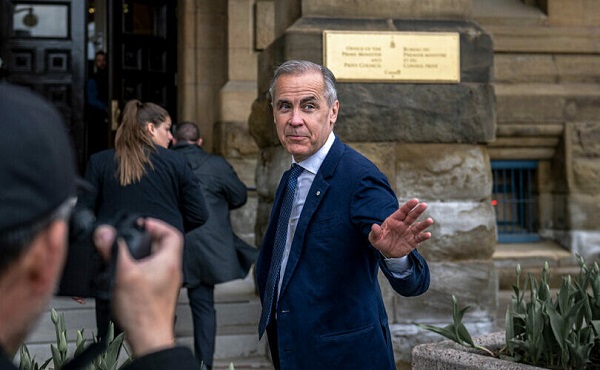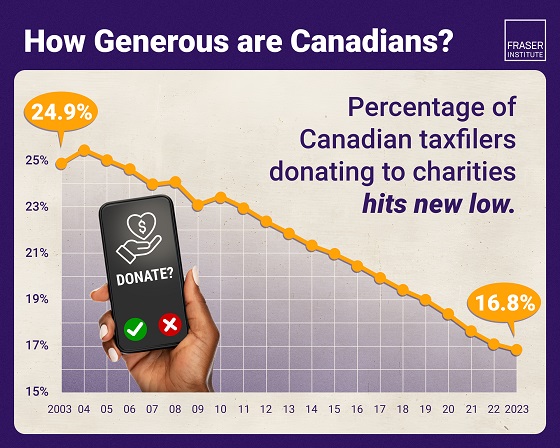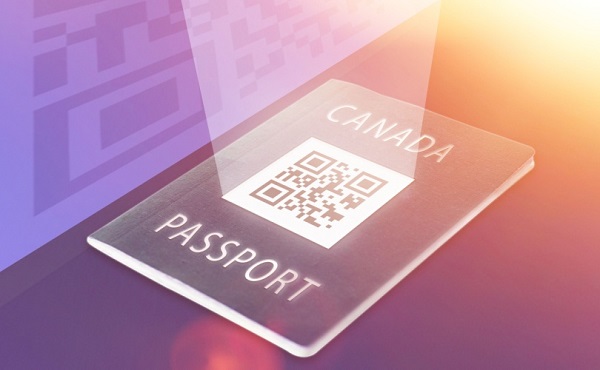Opinion
Incumbents and wealthy neighbourhoods prefer “at-large” – poorer prefer “Wards”

Red Deer keeps saying they want to be treated as a big city but campaign as a small town.
Elections for city councils are held through either a ward system or at-large system, depending on the location. Vancouver is the largest city in Canada to use the at-large system, while most other larger cities use wards.
Wards versus at large: Niagara Falls (population of 88,071),candidates discuss. If you want to get in the game, some say a ward system is helpful. … Now, more than a decade into an at-large system where eight councillors are elected to represent the entire city, some candidates are calling for a return to the ward system.
It may better represent the city, but some people find it confusing. One political scientist says we should consider bringing back the ward system with the civic election one week away.
A ward system, essentially, has an elected representative from varying neighbourhoods around the city.
Langara College political scientist Peter Prontzos says it’s a little more democratic and things won’t be rushed through council because there are more voices to be heard and more issues brought to the table.
But he warns there are cons.
“It may be a little more confusing in some ways and there may be occasional gridlock on city council, but I think that’s relatively minor.”
He says right now those who run for office are people with money who only represent wealthy neighbourhoods where something like public transit may not be issue.
Today, 8 out of the 9 current incumbent city councillors and mayor live south of the river and east of Gaetz.
This blog was posted on Todayville.com a year ago. How far off was I? Please read and consider next week’s vote and should we ask ourselves the same question now.
“At Large” versus “Ward” municipal governance.
A year from now, October 16, 2017 there will be a municipal election and the citizens of Red Deer will vote for (1) mayor, (8) city councillors, (7) public school trustees, and (5) separate school trustees.
Red Deer uses the “At Large” system for voting so you have the option of voting for all positions mayor, councillors and school trustees either public or separate. 16 spots or 14 spots respectively.
The last election in 2013 we had 5 people running for mayor, 30 people running for council, 14 people running for public school board and 7 people run for the separate school board, 56 people in total.
How many people can remember all the candidates, anyone? Let us make it easier. How many people can remember , everyone who won, anybody?
The huge advantage of the current “At Large” system falls to and gives advantage to the incumbents and then to the more wealthier campaigns,
It takes money to advertise to every household in the city, so naturally you will find that the wealthier candidates more often than not live in the wealthier neighbourhoods. It is less expensive and easier for the city staff and management to deal with councillors, at large, in bulk than it would be to deal with the ward system and on individual basis. There is I have been told less infighting among councillors, perhaps because they have more in common, under the at large system than under the ward system.
The advantage of the “Ward” system is that poorer neighbourhoods get equal representation. The citizens are closer to their elected officials and poorer candidates have smaller areas to cover. The city staff will have to refine their method of dealing with councillors in regards to neighbourhood issues.
There are pros and cons to both system, and we had a plebiscite on the issue during the 2013 municipal election. 71% voted to remain with the “At Large” system, feeling that Red Deer is still small enough to stay with this, the current system. The city council incumbents voted to budget $30,000 to inform the electorate of the issue, which was heavily in favor of the current system. They held an open house with a heavy leaning to the current system with just one local person, Larry Pimm, speaking a popular former councillor, known for and speaking for the “At Large” system.
I believe that by looking at the city today, the current system has systematically and historically failed one third of our city.
One third of our city lives north of the river and they are represented by 1 person out of 9 at city hall. Out of 7 indoor ice rinks and 4 aquatic centres in Red Deer, they have 1 north of the river and the latest buildings are being built or planned south of the river. When it comes to school boards, the city has, is building and planning 6 high schools, all on the south side and 5 high schools are unbelievably along 30 Avenue. So 1/3 of the population gets shafted and has been since merging with the city nearly 70 years ago.
Let us get back to voting. In 2013 we had 56 candidates for 21 spots and naturally most incumbents who ran won. How can anyone know and understand the positions of 56 candidates. Many would like one or 2 newcomers, vote for them and fill the rest with known incumbents. They are sabotaging the chances of newcomers by voting and electing their opposition.
I have been advocating for 4 wards within city limits. Each ward would have 25% of the population, give or take 5%. 100,000 residents would mean that each ward would have between 23,750 and 26,250 and the boundaries would change with the population growth.
Each ward would elect 2 councillors, perhaps the school boards would adopt the ward system, so the public school board could for example. have 2 trustees from each ward, and the mayor would be elected city wide.
Using the 2013 ballot, you would elect 1 mayor out of 5 candidates, you would elect 2 councillors out of 7 or 8 depending on the ward and the public school voters would elect 2 trustees out of 3 or 4 candidates, again, depending on the ward.
Perhaps under the ward system, with representation at the table, using my previous arguments, the residents living north of the river will actually get a new indoor ice rink, swimming pool and perhaps (dare I dream),their own high school. One can only dream.
The incumbents will say no to the ward system, stating the small size of Red Deer, omitting the fact that most incumbents are relying on their constituency of voters that are spread across the city and may not their constituency of voters may not be strong enough in only one ward.
Lately, there has been some voices out of city hall, demanding to be recognized as a big city and to be included in the “Big City Charter” and the extra money and power associated with it. Incidentally the cities covered by the big city charter currently use the ward system.
Should we hold another plebiscite, asking that our councillors represent their neighbours, should we ask that school board trustees represent the neighbourhood families, should we take the step to recognize that Red Deer is now a big city and not that small town anymore, and prepare for and govern like a big city.
2017 will see a few candidates run against the incumbent mayor but we may see in excess of 30 candidates run for city council and in excess of 20 candidates running for one of the 2 school boards’ trustee positions. Under the current system we will again see governing concentrating their attention in the same areas like downtown or the east hill. We will continue to ignore the needs of residents living in neighbourhoods like those north of the river.
“At Large” is an ideal that fails when reality is involved, the “Ward” system is a flawed ideal that may best represent our reality. What would do you think? It is your home. Thank you.
Business
The world is no longer buying a transition to “something else” without defining what that is

From Resource Works
Even Bill Gates has shifted his stance, acknowledging that renewables alone can’t sustain a modern energy system — a reality still driving decisions in Canada.
You know the world has shifted when the New York Times, long a pulpit for hydrocarbon shame, starts publishing passages like this:
“Changes in policy matter, but the shift is also guided by the practical lessons that companies, governments and societies have learned about the difficulties in shifting from a world that runs on fossil fuels to something else.”
For years, the Times and much of the English-language press clung to a comfortable catechism: 100 per cent renewables were just around the corner, the end of hydrocarbons was preordained, and anyone who pointed to physics or economics was treated as some combination of backward, compromised or dangerous. But now the evidence has grown too big to ignore.
Across Europe, the retreat to energy realism is unmistakable. TotalEnergies is spending €5.1 billion on gas-fired plants in Britain, Italy, France, Ireland and the Netherlands because wind and solar can’t meet demand on their own. Shell is walking away from marquee offshore wind projects because the economics do not work. Italy and Greece are fast-tracking new gas development after years of prohibitions. Europe is rediscovering what modern economies require: firm, dispatchable power and secure domestic supply.
Meanwhile, Canada continues to tell itself a different story — and British Columbia most of all.
A new Fraser Institute study from Jock Finlayson and Karen Graham uses Statistics Canada’s own environmental goods and services and clean-tech accounts to quantify what Canada’s “clean economy” actually is, not what political speeches claim it could be.
The numbers are clear:
- The clean economy is 3.0–3.6 per cent of GDP.
- It accounts for about 2 per cent of employment.
- It has grown, but not faster than the economy overall.
- And its two largest components are hydroelectricity and waste management — mature legacy sectors, not shiny new clean-tech champions.
Despite $158 billion in federal “green” spending since 2014, Canada’s clean economy has not become the unstoppable engine of prosperity that policymakers have promised. Finlayson and Graham’s analysis casts serious doubt on the explosive-growth scenarios embraced by many politicians and commentators.
What’s striking is how mainstream this realism has become. Even Bill Gates, whose philanthropic footprint helped popularize much of the early clean-tech optimism, now says bluntly that the world had “no chance” of hitting its climate targets on the backs of renewables alone. His message is simple: the system is too big, the physics too hard, and the intermittency problem too unforgiving. Wind and solar will grow, but without firm power — nuclear, natural gas with carbon management, next-generation grid technologies — the transition collapses under its own weight. When the world’s most influential climate philanthropist says the story we’ve been sold isn’t technically possible, it should give policymakers pause.
And this is where the British Columbia story becomes astonishing.
It would be one thing if the result was dramatic reductions in emissions. The provincial government remains locked into the CleanBC architecture despite a record of consistently missed targets.
Since the staunchest defenders of CleanBC are not much bothered by the lack of meaningful GHG reductions, a reasonable person is left wondering whether there is some other motivation. Meanwhile, Victoria’s own numbers a couple of years ago projected an annual GDP hit of courtesy CleanBC of roughly $11 billion.
But here is the part that would make any objective analyst blink: when I recently flagged my interest in presenting my research to the CleanBC review panel, I discovered that the “reviewers” were, in fact, two of the key architects of the very program being reviewed. They were effectively asked to judge their own work.
You can imagine what they told us.
What I saw in that room was not an evidence-driven assessment of performance. It was a high-handed, fact-light defence of an ideological commitment. When we presented data showing that doctrinaire renewables-only thinking was failing both the economy and the environment, the reception was dismissive and incurious. It was the opposite of what a serious policy review looks like.
Meanwhile our hydro-based electricity system is facing historic challenges: long term droughts, soaring demand, unanswered questions about how growth will be powered especially in the crucial Northwest BC region, and continuing insistence that providers of reliable and relatively clean natural gas are to be frustrated at every turn.
Elsewhere, the price of change increasingly includes being able to explain how you were going to accomplish the things that you promise.
And yes — in some places it will take time for the tide of energy unreality to recede. But that doesn’t mean we shouldn’t be improving our systems, reducing emissions, and investing in technologies that genuinely work. It simply means we must stop pretending politics can overrule physics.
Europe has learned this lesson the hard way. Global energy companies are reorganizing around a 50-50 world of firm natural gas and renewables — the model many experts have been signalling for years. Even the New York Times now describes this shift with a note of astonishment.
British Columbia, meanwhile, remains committed to its own storyline even as the ground shifts beneath it. This isn’t about who wins the argument — it’s about government staying locked on its most basic duty: safeguarding the incomes and stability of the families who depend on a functioning energy system.
Resource Works News
Business
Brutal economic numbers need more course corrections from Ottawa

From the Fraser Institute
By Matthew Lau
Canada’s lagging productivity growth has been widely discussed, especially after Bank of Canada senior deputy governor Carolyn Rogers last year declared it “an emergency” and said “it’s time to break the glass.” The federal Liberal government, now entering its eleventh year in office, admitted in its recent budget that “productivity remains weak, limiting wage gains for workers.”
Numerous recent reports show just how weak Canada’s productivity has been. A recent study published by the Fraser Institute shows that since 2001, labour productivity has increased only 16.5 per cent in Canada vs. 54.7 per cent in the United States, with our underperformance especially notable after 2017. Weak business investment is a primary reason for Canada’s continued poor economic outcomes.
A recent McKinsey study provides worrying details about how the productivity crisis pervades almost all sectors of the economy. Relative to the U.S., our labour productivity underperforms in: mining, quarrying, and oil and gas extraction; construction; manufacturing; transportation and warehousing; retail trade; professional, scientific, and technical services; real estate and rental leasing; wholesale trade; finance and insurance; information and cultural industries; accommodation and food services; utilities; arts, entertainment and recreation; and administrative and support, waste management and remediation services.
Canada has relatively higher labour productivity in just one area: agriculture, forestry, fishing and hunting. To make matters worse, in most areas where Canada’s labour productivity is less than American, McKinsey found we had fallen further behind from 2014 to 2023. In addition to doing poorly, Canada is trending in the wrong direction.
Broadening the comparison to include other OECD countries does not make the picture any rosier—Canada “is growing more slowly and from a lower base,” as McKinsey put it. This underperformance relative to other countries shows Canada’s economic productivity crisis is not the result of external factors but homemade.
The federal Liberals have done little to reverse our relative decline. The Carney government’s proposed increased spending on artificial intelligence (AI) may or may not help. But its first budget missed a clear opportunity to implement tax reform and cuts. As analyses from the Fraser Institute, University of Calgary, C.D. Howe Institute, TD Economics and others have argued, fixing Canada’s uncompetitive tax regime would help lift productivity.
Regulatory expansion has also driven Canada’s relative economic decline but the federal budget did not reduce the red tape burden. Instead, the Carney government empowered cabinet to decide which large natural resource and infrastructure projects are in the “national interest”—meaning that instead of predictable transparent rules, businesses must answer to the whims of politicians.
The government has also left in place many of its Trudeau-era environmental regulations, which have helped push pipeline investors away for years. It is encouraging that a new “memorandum of understanding” between Ottawa and Alberta may pave the way for a new oil pipeline. A memorandum of undertaking would have been better.
Although the government paused its phased-in ban on conventionally-powered vehicle sales in the face of heavy tariff-related headwinds to Canada’s automobile sector, it still insists that all new light-duty vehicle sales by 2035 must be electric. Liberal MPs on the House of Commons Industry Committee recently voted against a Conservative motion calling for repeal of the EV mandate. Meanwhile, Canadian consumers are voting with their wallets. In September, only 10.2 per cent of new motor vehicle sales were “zero-emission,” an ominous18.2 per cent decline from last year.
If the Carney government continues down its current path, it will only make productivity and consumer welfare worse. It should change course to reverse Canada’s economic underperformance and help give living standards a much-needed boost.
-

 Business2 days ago
Business2 days agoAlbertans give most on average but Canadian generosity hits lowest point in 20 years
-

 Censorship Industrial Complex2 days ago
Censorship Industrial Complex2 days agoOttawa’s New Hate Law Goes Too Far
-

 Bruce Dowbiggin2 days ago
Bruce Dowbiggin2 days agoCarney Hears A Who: Here Comes The Grinch
-

 Fraser Institute1 day ago
Fraser Institute1 day agoClaims about ‘unmarked graves’ don’t withstand scrutiny
-

 Business2 days ago
Business2 days agoTaxpayers Federation calls on politicians to reject funding for new Ottawa Senators arena
-

 Digital ID1 day ago
Digital ID1 day agoCanada considers creating national ID system using digital passports for domestic use
-

 Energy1 day ago
Energy1 day agoMeet REEF — the massive new export engine Canadians have never heard of
-

 National1 day ago
National1 day agoCanada’s free speech record is cracking under pressure






